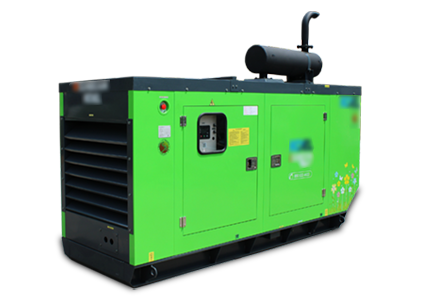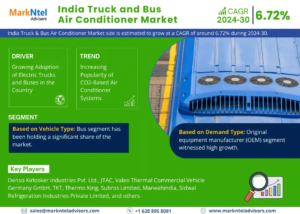
Retrofitting emission control devices on diesel engines is a crucial step in reducing air pollution, which has severe health and environmental implications. Particulate matter (PM) and nitrogen oxide (NOx) emissions from diesel engines cause acid rain, ground-level ozone, and decreased visibility. In this blog article, we will examine the advantages of retrofitting emission control systems as well as the technologies available to improve air quality.
The Need for Emission Control Devices
Diesel engines’ tremendous torque, fuel efficiency, and dependability make them a popular choice for heavy-duty trucks, buses, and off-road vehicles. They do, nevertheless, also contribute significantly to air pollution. Diesel engine pollutants have been connected to several health concerns, such as respiratory disorders and lung damage. Furthermore, it has been demonstrated that exposure to diesel exhaust causes cancer in people.
What are the Most Common Types of Retrofitted Emission Control Devices?
Diesel Particulate Filters: Diesel engine DPFs are ceramic devices that use physical filtration to cut down on particle emissions. To retain efficiency, they must be cleaned frequently since they gather particulate matter in the exhaust stream. DPFs are useful in cutting particle emissions and have demonstrated remarkable filtration efficiencies—above 90%.
Diesel Oxidation Catalysts: Comparable to on-road vehicle catalytic converters, DOCs can cut carbon monoxide and hydrocarbons by 40% and 50%, respectively. To create non-toxic carbon dioxide from CO and unburned HC, they employ catalytic chemical conversion. Diesel engine undesirable emissions can be effectively reduced by using DOCs.
By lowering the dangerous pollutants that machinery and cars generate, these modified emission control systems help to preserve the environment and enhance air quality.
What is the Cost of Retrofitting Emission Control Devices
The cost of a retrofit emission control device can vary depending on the specific technology and application. According to the sources provided,
- Technologies such as Diesel Particulate Filters (DPFs), Diesel Oxidation Catalysts (DOCs), and Selective Catalytic Reduction (SCR) systems can be used to retrofit emission control devices for diesel engines.
- It has been calculated that retrofit technology like diesel oxidation catalysts and catalyzed diesel particle filters can save anywhere from $18,700 and $87,600 in costs.
- Retrofit emission control devices for diesel generators can be priced at around Rs 50,000 per piece in certain contexts.
- In India, businesses like Fuelflip Energy sell retrofit emission control devices and highlight how their filter-less technology, which uses electrostatic precipitation to capture particulate matter carbon with an efficiency of over 70%, improves air quality.
What are the Factors that Affect the Cost of Retrofitting Emission Control Devices?
Several factors can influence the cost of retrofitting emission control devices,
Type of Technology: The particular pollution control technology being employed—diesel oxidation catalysts, diesel particulate filters, or selective catalytic reduction systems, for example—can affect the total cost of retrofitting.
Vehicle or Equipment Type: The kind of equipment or vehicle being retrofitted—industrial machinery, diesel generators, or light-duty vehicles—can have an impact on the selection of emission control devices and installation costs.
Regulatory Requirements: The cost of retrofitting emission control devices may increase if particular technologies or degrees of emission reduction are required to comply with various emission standards and laws.
Production Volume and Efficiency: Manufacturing volume and economies of scale can have an impact on how cost-effective it is to retrofit emission control systems. Higher production numbers might lead to lower costs per unit.
Maintenance and Operating Costs: Analyzing the total cost of retrofitting requires taking into account the running and maintenance expenses related to the pollution control equipment.
Technology Maturity: Costs may vary depending on how advanced the pollution control technology is. Because of their established manufacturing methods and lower development costs, more mature technologies could be more affordable.
All of these elements add up to the price of retrofitting emission control equipment, which emphasizes how important it is to take a variety of things into account when making plans for emission control measures.
How do the Costs Of Retrofitting Emission Control Devices Vary By Vehicle Type?
The costs of retrofitting emission control devices can vary by vehicle type based on several factors outlined in the provided sources,
Light-Duty Vehicles: A cost analysis reveals that the cost of implementing emission reduction technologies for light-duty vehicles (LDVs) to comply with strict emission rules varies based on the technology employed and the needed level of emission stringency. The pollution control systems for gasoline engines are quite advanced, leading to minimal additional expenses for compliance with even the strictest regulations.
Heavy-Duty Vehicles and Off-Road Equipment: Diesel engines that power off-road equipment and heavy-duty vehicles release large amounts of pollutants, such as nitrogen oxides (NOx) and particulate matter (PM). To lower these emissions, retrofit solutions have been created, frequently bringing older cars up to the emissions regulations needed for new cars. These retrofit methods have proven to be able to cut emissions considerably without sacrificing the performance of the equipment or the vehicle at realistic costs.
In-Use Engines: Technology solutions created for new engines and cars are part of strategies to minimize emissions from in-use engines, particularly in vehicle fleets operating in environmentally sensitive areas. The usage of alternative fuels, engine replacement or upgrade, emission control retrofit, engine operation and maintenance, and other factors can all affect how cost-effective NOx emission retrofits are.
Because different vehicle types have different technological needs, legal requirements, and specific pollutants to reduce, the costs of retrofitting emission control equipment vary.
Conclusion
In conclusion, Retrofitted emission control devices are the ones that lower air pollution and enhance public health. The Advantages of Emission Control Device Retrofits Which kinds of modified emission control devices are most prevalent? What are the advantages of retrofitting emission control equipment? How much does it cost? What are the elements that influence the cost of retrofitting emission control equipment? How do the costs of retrofitting emission control equipment vary by vehicle type? Accept the power-generating RECD system of the future, where reliability and innovation coexist and sustainability sets the benchmark.
Read More( Click Here )

























Hey! This post couldn’t be written any better! Reading through this post reminds me of my good
old room mate! He always kept chatting about this. I will forward this write-up to him.
Fairly certain he will have a good read. Thanks for sharing!
My web-site – prova dent
I have been exploring for a little for any high-quality articles
or blog posts in this kind of house . Exploring in Yahoo I ultimately stumbled upon this site.
Studying this info So i’m happy to express that I have
an incredibly excellent uncanny feeling I found out just what
I needed. I such a lot undoubtedly will make sure to don?t put out of your mind this site and provides
it a glance regularly.
Appreciate the recommendation. Will try it out.
m-care.biz
ipt.pw
I think what you published was actually very reasonable.
But, think about this, what if you added a little content?
I ain’t suggesting your content isn’t solid, however
suppose you added something that makes people want more?
I mean Submit Blogs for Enhanced Visibility & Traffic Growth – submitmyblogs
is kinda vanilla. You could glance at Yahoo’s front page and see how they
create article titles to grab viewers to click. You
might add a video or a related pic or two to grab readers excited about what you’ve got to say.
Just my opinion, it would bring your posts a little
bit more interesting.
Feel free to visit my webpage :: is tonic greens legit
самолеты купить билеты